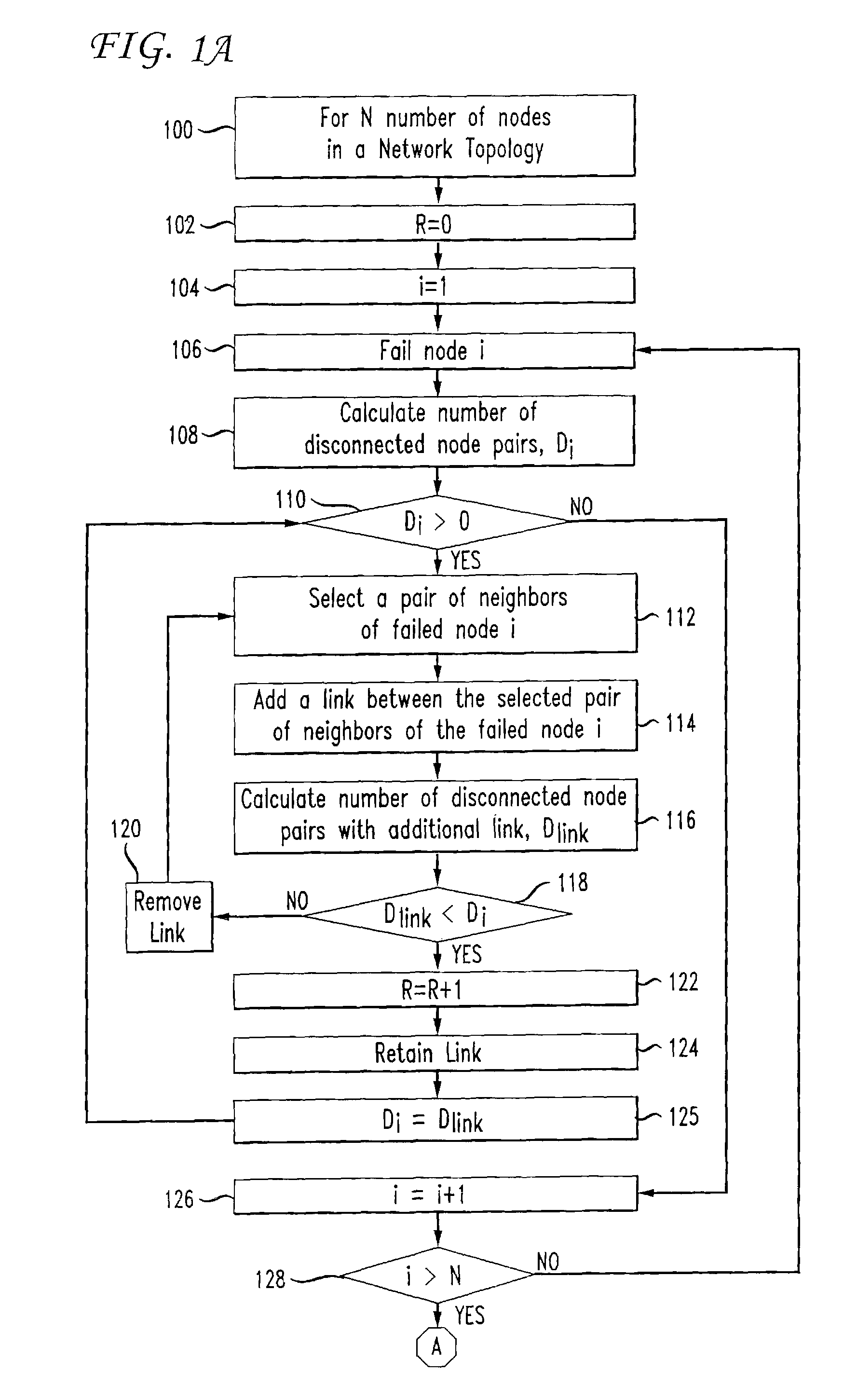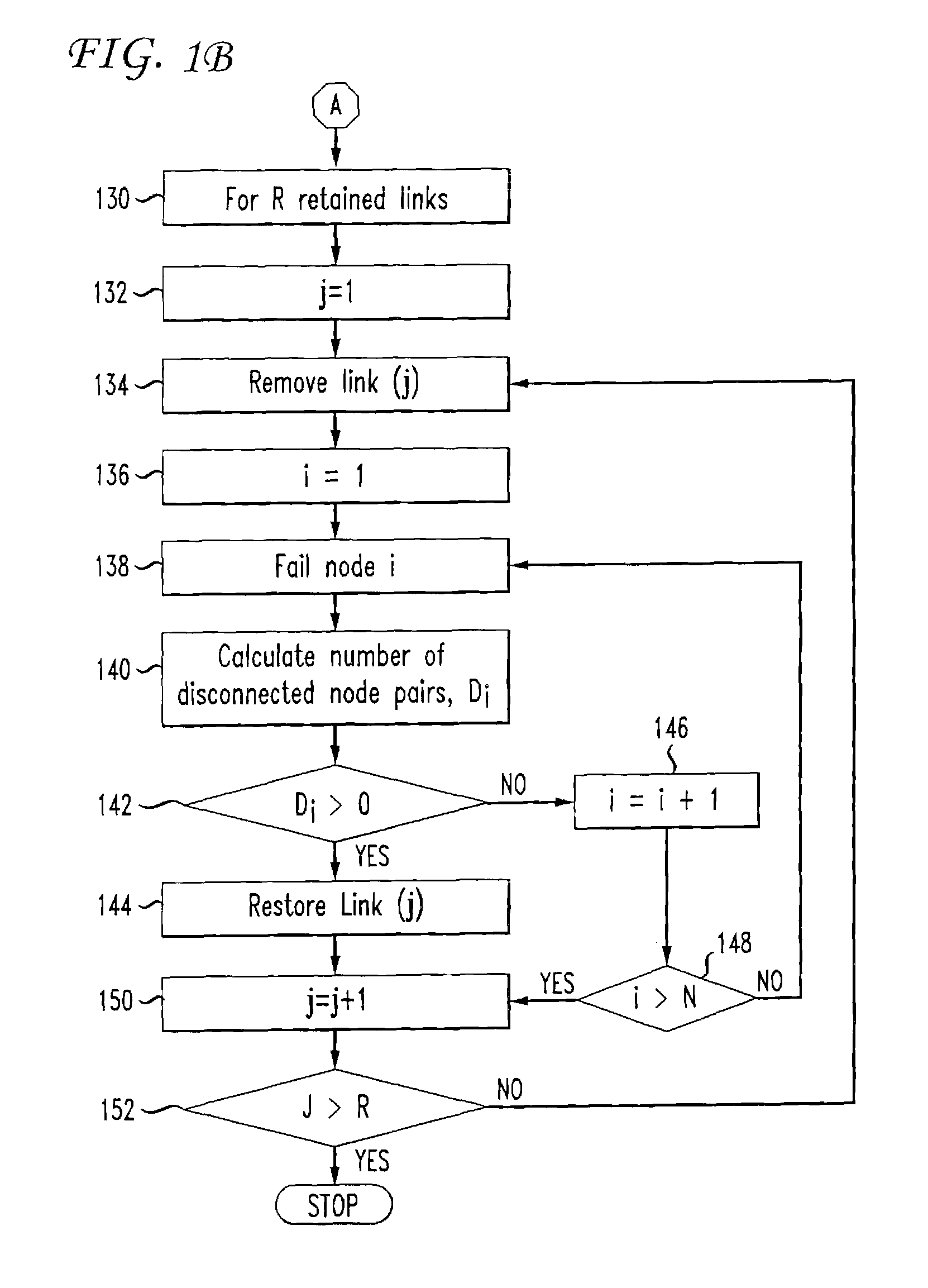Method and apparatus for increasing survivability in IP networks
a technology of ip network and survivability, applied in the field of communication systems, can solve the problems of increasing achieve the effects of increasing the capability of a network topology model, reducing at least one of the cost of network operation, and imbalance in link utilization
- Summary
- Abstract
- Description
- Claims
- Application Information
AI Technical Summary
Benefits of technology
Problems solved by technology
Method used
Image
Examples
Embodiment Construction
I. Introduction
[0022]The present invention is a tool for network administrators to analyze and assess the capability of existing and proposed network topologies to maintain service continuity in the presence of faults. In order to use the invention, the network administrator will initially obtain relevant parameters regarding the existing or proposed network topology to generate a model of the topology for analysis. That is, once the parameters of the network topology are obtained for analysis, the invention works off-line on a model of the network topology. The network topology parameters can generally be obtained from a network topology server or database, or could be entered manually as well.
[0023]The steps of the method of the invention include adding new links to the network topology model to protect against single node failures, and adjusting link weights for the network topology model to reduce at least one of a cost of network operation and an imbalance in link utilizations....
PUM
 Login to View More
Login to View More Abstract
Description
Claims
Application Information
 Login to View More
Login to View More - R&D
- Intellectual Property
- Life Sciences
- Materials
- Tech Scout
- Unparalleled Data Quality
- Higher Quality Content
- 60% Fewer Hallucinations
Browse by: Latest US Patents, China's latest patents, Technical Efficacy Thesaurus, Application Domain, Technology Topic, Popular Technical Reports.
© 2025 PatSnap. All rights reserved.Legal|Privacy policy|Modern Slavery Act Transparency Statement|Sitemap|About US| Contact US: help@patsnap.com



